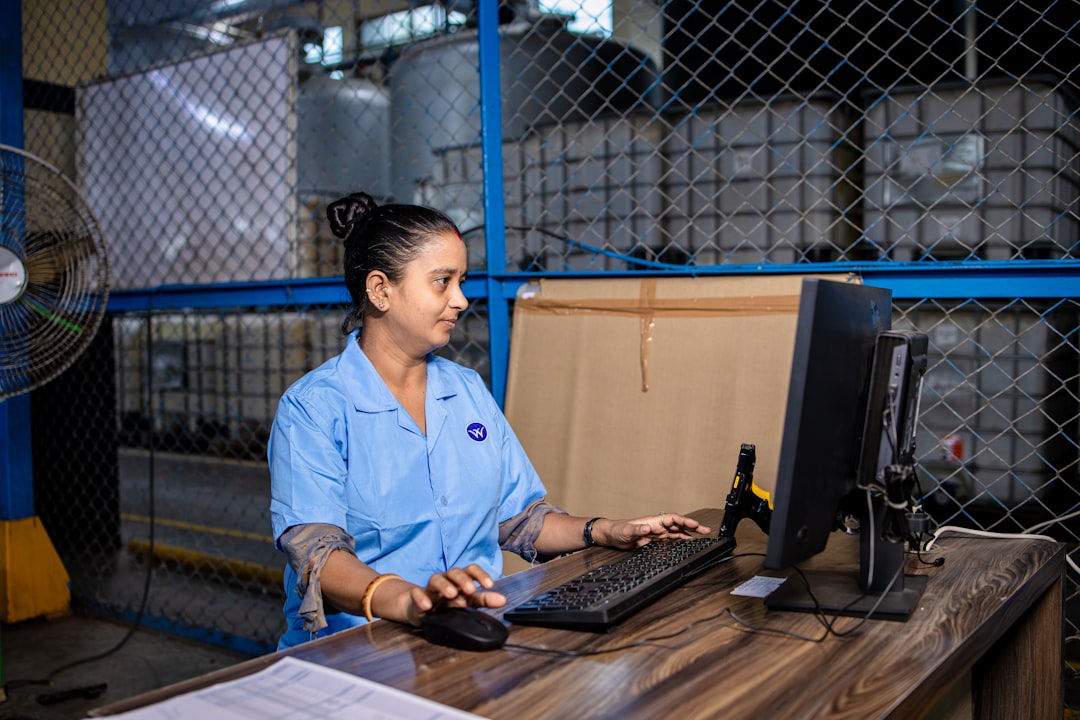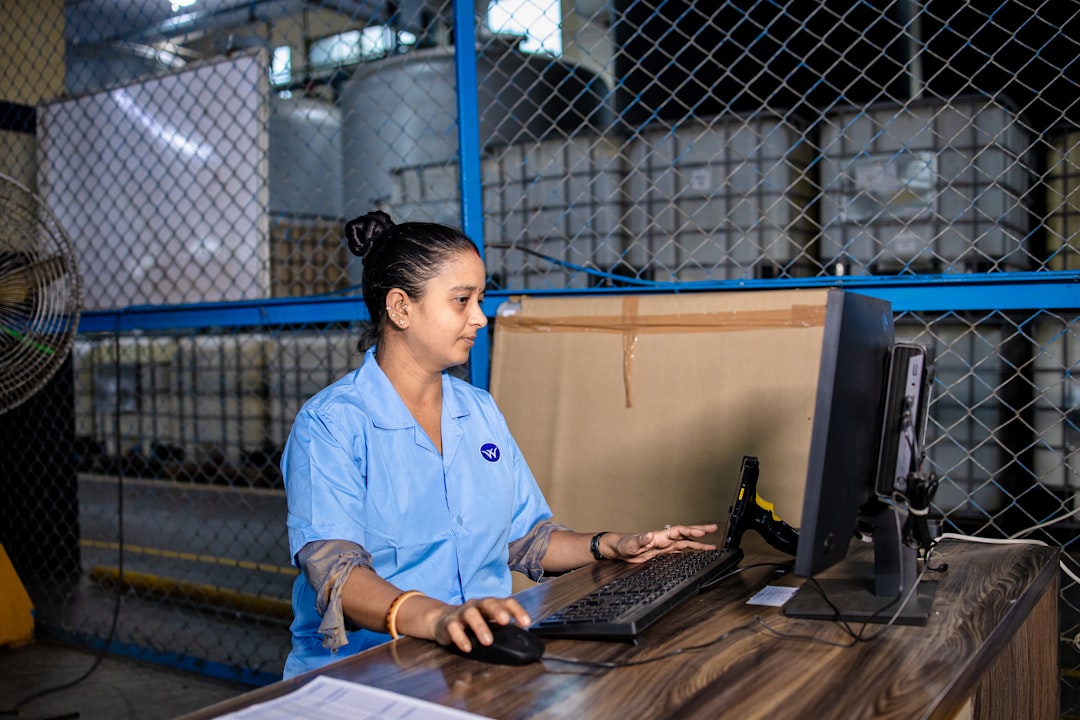

Engage prospects with a scan and streamline customer engagement with FREE QR code marketing tools by Sona – no strings attached!
Create a Free QR CodeFree consultation

No commitment

Engage prospects with a scan and streamline customer engagement with FREE QR code marketing tools by Sona – no strings attached!
Create a Free QR CodeFree consultation

No commitment
Labor contracting services are experiencing rapid transformation as businesses navigate shifting workforce demands, growing compliance requirements, and the persistent need to drive operational efficiency. In today’s market, standing out as a labor contractor means not only delivering skilled talent but also improving transparency, engagement, and administrative workflows for clients and crews alike. A common frustration within the field stems from missed opportunities, whether they are high-value workforce prospects who go untracked or lost moments when critical jobsite information is not accessible at the right time. These pain points can stall both business growth and workforce performance.
QR codes in marketing have emerged as a strategic tool for labor contracting services seeking to bridge offline materials such as jobsite signage, safety notices, ID badges, and onboarding packets with immediate digital access points. Too often, critical touchpoints on a site are disconnected from workflows due to manual processes and paper-based systems, leading to lapses in compliance, miscommunication, or missed follow-ups. By making information, forms, and support resources instantly accessible via a simple scan, QR codes help firms capture audience intent, streamline operations, and respond faster to client needs, all while simplifying engagement for crews and clients without the friction of app downloads or manual data entry.
This article explores how labor contracting services can apply QR code solutions to address persistent challenges, illustrating where and how QR can be utilized to enhance marketing, reduce paperwork, improve workforce compliance, and drive measurable ROI in both B2B and direct contractor scenarios.

Labor contractors frequently encounter operational slowdowns caused by lost paperwork, inaccurate manual data entry, and inefficient communication between fieldworkers and office teams. These issues can lead to compliance oversights and costly errors when incidents are not promptly reported or attendance is not tracked in real time. QR codes help eliminate these barriers by turning physical materials into instant gateways to digital workflows, so the right information is delivered at the right moment and captured in the right system.
QR codes offer a modern alternative to outdated paperwork, printed brochures, manual schedules, and sign-up sheets. For labor contracting services, digital transformation can directly address these pain points by deploying simple, scannable actions that reduce manual handling. The result is fewer errors, faster response times, and better visibility across jobsites and teams. When deployed with a centralized QR platform, you can also monitor usage, update destinations without reprinting, and automate follow-ups.
By digitizing these processes, labor contractors gain greater control and insight, shortening administrative cycles and reducing the risk of mission-critical details falling through the cracks. Dynamic QR code management platforms such as Sona QR support advanced use cases by automating updates, consolidating analytics, and enabling segmentation so you can continuously refine the experience and improve outcomes.

One of the foundational challenges labor contractors face is the disconnect between physical field operations and the digital management systems meant to support them. Activity happens in the yard, on trucks, and across jobsites, yet the data needed to make smart staffing and compliance decisions often lives in separate systems or on paper. Missed follow-ups, anonymous interactions on jobsites, and incomplete understanding of workforce engagement frequently lead to lost opportunities for both business development and compliance. See contractor QR best practices.
QR codes close this gap by making physical surfaces actionable in a single scan. They remove the need for crews and clients to download apps or search for URLs, and they ensure that any scan can be measured and followed up. As a result, every poster, badge, or invoice can become a measurable step in your workflow that supports faster decisions, cleaner data, and better customer experience.
By integrating these touchpoints, contractors ensure that high-value prospects, crew members, and clients do not slip through the cracks and that every interaction contributes to sustained operational excellence and growth.
Labor contractors often miss critical signals, such as interest in staffing a new project or a request for an urgent equipment repair, because analog touchpoints make it hard to capture intent. Choosing the right QR format for each scenario ensures every scan triggers the right action and reaches the correct destination.
In this vertical, the most useful formats are those that enable forms, web links, contacts, app downloads, and secure access. Each one has a specific job to do. Used together, they create a connected experience that carries crews and clients from the physical environment to the exact digital step you need them to take.
With a platform like Sona QR, you can generate any of these formats, centrally manage destinations, add UTM parameters, and track performance by placement. Dynamic QR codes allow you to modify where a code points over time without changing the printed asset.

Growth in labor contracting often stalls when physical workflows are not connected to the next best digital action. QR codes unlock growth when they are deployed where contractors, supervisors, and clients already interact with tangible materials. You do not need to invent new touchpoints. You simply enhance the ones you already have with a clear call to action and one-scan simplicity.
When planning placements, think about where delays, confusion, or missed follow-up tend to occur. Then give those surfaces a useful scan action that speeds the job and captures the signal. Done well, your crews and clients will feel more supported and you will capture more actionable data with every scan.
Maximizing these opportunities helps labor contractors surface, qualify, and re-engage both prospects and crew members before leads go cold or compliance falters. Over time, you can identify your highest-performing placements and replicate them across projects and regions.

Labor contracting leaders can start with a handful of high-impact use cases that map directly to daily operations. Focus on scenarios that remove friction, reduce paperwork, and provide fast visibility into what is happening on the ground. Once a foundation is in place, expand into marketing and business development use cases that turn offline interest into measurable pipeline.
Below are three proven applications that consistently deliver value, along with their primary outcomes. Each use case can be launched with a single printed code and scaled quickly across crews and sites.
All of these use cases translate traditional analog workflows into responsive, measurable engagement. They minimize lost opportunities and reduce the administrative burden for both the workforce and management teams.
In labor contracting, valuable business is often lost when signals remain anonymous. A foreman picks up a brochure at a trade show, a property manager glances at a yard sign, or a subcontractor views a safety board without ever making contact. Each QR scan can turn those anonymous moments into segmented audiences you can nurture.
By assigning unique codes to specific surfaces and scenarios, you capture context. That context can be used to route follow-ups, tailor messages, and prioritize outreach. Over time, you will create a library of audience segments reflecting your real-world funnel rather than assumptions. For retargeting tactics, see Sona’s Playbook ‘Intent-Driven Retargeting: Driving High-Impact Campaigns with First-Party Intent Signals’.
With Sona QR, each code becomes a smart entry point that captures real behavior and builds segments automatically. You can then orchestrate follow-ups that feel timely and relevant rather than generic.
Labor contracting services often rely heavily on physical marketing and operational materials, yet those channels are traditionally difficult to measure. QR codes turn print and in-field signage into digital signals, making it possible to attribute leads, track engagement, and follow up quickly. The same codes can be mirrored across digital channels to create continuity for your audience.
Think of QR codes as connectors. They link every surface across your brand ecosystem to a specific next step. When your marketing team can see which surfaces drive which results, they can redeploy budget for higher yield and ensure sales has the right context for outreach.
Centralizing QR code management allows labor contractors to close feedback loops across channels. Scan interactions feed your lead capture, training compliance, and support workflows, creating a marketing engine that learns and improves with each campaign.
Labor contracting firms can underutilize campaign data when engagement signals are not captured or attributed. A structured checklist ensures every offline scan turns into an actionable opportunity. Before you print, clarify what success looks like, who you are trying to reach, and which moments you want to measure. After you deploy, watch the data and refine.
This checklist is tailored to common labor contracting scenarios such as contractor onboarding, jobsite compliance, and lead generation at events. Each step is designed to align your QR deployment with a clear business outcome and a measurable path to improvement.
Define a single, high-impact objective such as speeding new-hire onboarding, collecting digital safety attestations, or capturing qualified leads at a builders’ expo. Tie the use case to a KPI, for example time-to-start for new hires, percent of crews who complete induction before shift, or number of scheduled walkthroughs from an event.
Select static codes for fixed destinations like a PDF handbook or a safety poster that rarely changes. Choose dynamic codes for campaigns that require tracking, retargeting, and flexibility. Dynamic codes let you update destinations, add UTM parameters, and A/B test landing pages without reprinting materials.
Brand the frame, add your logo, and write a strong call to action such as Scan for Site Induction or Scan to Book a Crew. Print at a size appropriate for viewing distance and test on multiple devices under different lighting and angles. Confirm the code scans from the placement height and typical approach path.
Place codes on jobsite gates, equipment tags, foreman clipboards, payroll slips, expo banners, and direct mailers. Match each placement to an expected behavior. For example, gates for induction, equipment tags for maintenance reporting, and mailers for estimate requests. Use unique codes per placement to attribute results.
Monitor scans by time, location, device, and creative. Feed data into your CRM to trigger follow-ups and score engagement. Iterate by moving codes to higher-visibility locations, refining CTAs, or simplifying forms based on drop-off analysis. Schedule regular reviews so optimizations become a habit, not a one-off. See Sona’s blog post Integrate Sona with HubSpot CRM: Unify Data to Supercharge Your Demand Generation.
Without transparency into field engagement, labor contractors can let valuable intent signals remain hidden. A code on a safety board might get scanned dozens of times, but if you cannot tie those scans to roles, sites, or outcomes, you miss the chance to improve. Proper tracking converts scans into insights you can act on, which is the foundation for better staffing decisions, safer jobsites, and healthier pipelines.
The goal is not only to count scans. It is to understand what those scans represent in the buyer or worker journey and how to guide the next step. When scan data is connected to your CRM, marketing tools, and revenue reports, you can see how QR engagement contributes to real business results.
With Sona QR and Sona.com, scan-level data is unified with web analytics and CRM activity, giving you end-to-end visibility from the first scan to closed revenue or completed compliance. Identity resolution and multi-touch attribution help you link anonymous scans to known buyers and crew members, so you can show the role QR plays in pipeline creation, retention, and operational outcomes.
QR programs thrive when they are easy to find, easy to understand, and tied to useful outcomes. If scans are low, the problem is often unclear intent, poor placement, or a landing experience that asks too much. Start with clarity, then build habits by training teams and automating follow-ups.
Focus your improvements where they will matter most: the surfaces that already see attention. Make the desired action obvious, reduce steps, and show the value of scanning in concrete terms like faster pay resolution or quicker onboarding. For ideas, see 7 ways to use QR codes.
Creative deployments can boost adoption. For example, place a branded QR sticker on safety vests that links to emergency contacts and nearest hospital directions or add a QR code to subcontractor invoices that lets clients rebook crews in a few clicks. These small conveniences build trust and keep your pipeline moving.

Case studies and field-tested tactics can jump-start internal buy-in and give your teams a blueprint. Start with a pilot at one site or within one department, document the results, and then scale to other crews and regions. The following examples demonstrate how QR codes translate into measurable operational and commercial gains.
You can adapt these ideas to your own realities. Swap in your forms, policies, and CRMs, and match the CTAs to your language. The key is to choose placements that align with urgent needs and to monitor usage closely during the first weeks.
These examples show that QR codes are not just digital gimmicks. They are operational levers that increase visibility and speed. Over time, they also teach you where to deploy resources for the greatest impact.
Inconsistent QR performance can frustrate field teams and discourage adoption. Many failures trace back to small oversights such as low-contrast art, reflective surfaces, or vague CTAs. Control the variables you can and test in the environment where scanning happens.
Set simple standards and incorporate QR checks into your normal operating cadence. A few minutes of testing before a print run saves hours of troubleshooting in the field.
Low engagement can be turned around with training and incentives. Include QR education in onboarding, make scanning a standard part of toolbox talks, and tie completion to recognition or rewards when appropriate.
The integration of QR codes has fundamentally changed the operational landscape for labor contracting services. Where workforce engagement and client communication once suffered from manual lags and missed signals, contractors now have a tangible means to turn every physical touchpoint, be it a toolbox sticker, sign-in station, or bill of lading, into a dynamic channel for actionable interaction.
By adopting QR-powered workflows, labor contracting businesses can proactively address missed opportunities, convert high-intent actions into measurable outcomes, and illuminate every step of both crew and client journeys. The result is accelerated onboarding, enhanced safety compliance, seamless follow-up, and a future-proof approach to managing workforce operations. When every offline moment feeds into a unified, digital engagement strategy, companies unlock scalable growth and operational resilience in an increasingly complex labor contracting sector. Start creating QR codes for free.
QR codes have revolutionized labor contracting services by turning traditional access methods into seamless, secure, and measurable entry points. Whether it’s streamlining workforce verification, enhancing site access management, or improving compliance tracking, QR codes replace cumbersome paperwork with instant, mobile-friendly scans that deliver real-time data and operational efficiency.
Imagine effortlessly monitoring who accesses your job sites, when, and for how long—empowering you to optimize labor allocation and ensure safety compliance with precision. With Sona QR, you can create dynamic, trackable QR codes that update instantly without the need for reprinting, linking every scan to actionable insights that boost productivity and reduce administrative overhead.
Start for free with Sona QR today and transform every scan into a powerful tool for smarter labor management and streamlined site access.
QR codes can be integrated by linking physical materials like jobsite signage, safety notices, ID badges, and onboarding packets to digital workflows, enabling instant access to forms, resources, and support without manual data entry or app downloads.
QR codes improve transparency, streamline operations, reduce paperwork errors, enhance workforce compliance, enable real-time attendance tracking, increase engagement, and provide measurable data for better decision making and ROI.
They turn offline marketing materials such as flyers, yard signs, and expo handouts into lead capture tools by linking to service request forms or appointment schedulers, enabling faster follow-up and tracking which campaigns deliver results.
For example, printing QR codes on project badges that link to role-specific induction checklists can reduce orientation time, increase induction completion rates, and provide a reliable audit trail for safety managers.
By digitizing safety manuals, automating time and attendance tracking, streamlining onboarding with digital forms, and converting static materials into trackable data, QR codes reduce manual errors, speed response times, and improve visibility across jobsites.
Use Sona QR's trackable codes to improve customer acquisition and engagement today.
Create Your FREE Trackable QR Code in SecondsJoin results-focused teams combining Sona Platform automation with advanced Google Ads strategies to scale lead generation

Connect your existing CRM

Free Account Enrichment

No setup fees
No commitment required

Free consultation

Get a custom Google Ads roadmap for your business






Launch campaigns that generate qualified leads in 30 days or less.
